ACKNOWLEDGMENTS
 Everybody I have ever known has helped me write this book. But, for their practical help and advice, I want to thank:
Everybody I have ever known has helped me write this book. But, for their practical help and advice, I want to thank:
Paula Landesman and Jerry Berger, who were endlessly encouraging.
Frank Assumma and Karen Kaczmar, who gave me a room of my own in the country.
Ann Vivian and Andy Dintenfass, for the cottage in the Vineyard.
My agent, Kathy Robbins, who put the proposal on a table and walked around it, worrying.
Betsy Feichtmeir, who tested the recipes for the sheer fun of it.
And my editor, Ann Godoff, who kept saying, Keep going.
ALSO BY RUTH REICHL
Comfort Me with Apples: More Adventures at the Table
Not Becoming My Mother: And Other Things SheTaught Me Along the Way
Garlic and Sapphires: The Secret Life of a Critic in Disguise

R UTH R EICHL was editor in chief of Gourmet magazine for ten years and is currently the host of Adventures with Ruth. She lives in New York City with her husband, son, and two cats.

QUESTIONS AND TOPICS FOR DISCUSSION
1. The first two chapters of Tender at the Bone feature the culinary shortcomings of Ruth Reichls relatives, particularly her mother. To what do you attribute prowess in the kitchen? Is the ability (or inability) to cook a reflection of other traits? Who are the most notorious cooks in your family?
2. Besides a perfect recipe for wiener schnitzel, what other gifts did Mrs. Peavey impart to Reichl?
3. How was Reichl affected by her three years at boarding school in Montreal? What, do you think, was her mothers true motivation in enrolling her there?
4. In the absence of parents, what role did cooking take while Reichl was a teenager? Why did feeding her friends become her primary joy? Does , Devils Food, express unique or universal notions about adolescence and self-image?
5. In what way does the topic of mental illness shape the memoir overall, particularly the bipolar disorder that afflicted Reichls mother? What do the books images evoke regarding the psychology of indulgence and hunger?
6. How does the tenderness mentioned in the title manifest itself throughout the book? How do Reichls sense of humor and her wry honesty play off each other?
7. What were Reichls early impressions of France, including her summer on the le dOlron? How did her casual immersions in French cooking shape her attitudes toward cuisine in general? How did they help her on the job at LEscargot and when she later embarked on the vineyard tour?
8. At the end of , Serafina writes, I hope you find your Africa, in a note to Reichl. How was Reichls view of humanity being transformed by Serafina and Mac?
9. Did traveling in North Africa bring Reichl closer to or farther from a sense of fulfillment? How did this travel experience compare with her previous ones?
10. As Reichl watched Doug bond with her parents (he even elicited previously unknown details about her fathers life), she felt a new level of exasperation with her family. What models for marriage did she have? Was winter in Europe, with Milton often at the helm, a good antidote?
11. Reichl writes that in 1971 lower Manhattan was a cooks paradise. What did life on the Lower East Side, from the gefilte fish episode to Mr. Bergaminis veal breast recommendation, teach Reichl about how she would define a successful meal? Why was the Superstar so insistent that great cooking was a sure way to seduce a man? With Mr. Izzy T as navigator, what did the Superstar and Reichl both learn about themselves?
12. How does the idealism of Channing Way compare with the organic food movement of today? Have any of Nicks tenets become part of mainstream life in the twenty-first century?
13. The now-legendary Swallow Collective was as innovative in its management style as in its menus. What chapters in culinary history are captured in Reichls recollections of working there?
14. Tender at the Bone ends with an image of Reichl conquering her bridge phobia while accompanied by Marion Cunningham, who says, Nobody knows why some of us get better and others dont. What ingredients in Reichls life may have helped her get better and achieve such tremendous success in the years that would follow this scene?
15. Food writing presents the unusual challenge of conveying distinct, intangible flavors through mere words. How would you characterize Reichls approach to the task? Does she approach haute cuisine and comfort food in the same way? How would you have responded to her mothers comment that by developing a career as a food writer Reichl was wasting her life?
16. How would you characterize the recipes Reichl selected for Tender at the Bone? Do they possess a common personality? What recipes represent the most significant turning points in your life?
A Thousand Words
Its hard to remember a time when food memoirs were not part of the general landscape, but when I was writing Tender at the Bone, the genre did not exist. As I was trying to think about telling my story through food, it occurred to me that the recipes could function the way photographs did in other peoples books. I wanted readers to get to know the characters through the food they cooked and ate, to be able to taste the time. I might not be able to include a recipe for Moms Everything Stew, but it seemed to me that if you made her Corned Beef Ham, you might begin to understand the way her mind worked. So I took down the big, messy folder that contained the recipes Mom had torn out of magazines, the handwritten file cards that Alice once gave me, and the scraps of paper on which my own favorite recipes were scrawled and discovered that each one was an instant passport to the past.
Over time Ive heard from many readers who have cooked the recipes, and theyve all said how much these dishes have enhanced their enjoyment of the book. But almost all of them have added, I wish there were photographs as well.
That sent me to a shelf filled with a motley collection of photo albums. I bought most of them at thrift stores, and their covers are torn, the pages so loose that each time I pick one up photos go tumbling to the floor. The pictures have been thrown in at random, so Ill often find people who never met each other staring out from the same page. It always makes me happy to spend time among those Ive loved best, and each time I go through the albums I discover something new. Heres my mother looking glamorous, Aunt Birdie even tinier than I remember, Doug and me with a group of friends looking into the camera as if our whole lives are still ahead of us. Which, of course, they were.
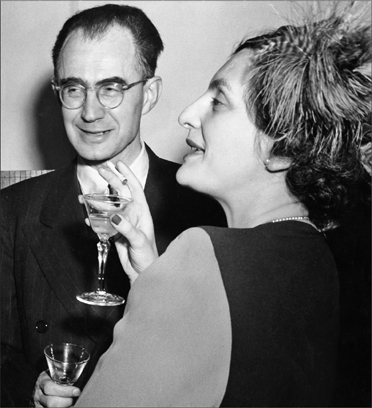
This picture of my parents was taken at a cocktail party in the late forties a couple of years before I was born. Mom saved her clothes, and I remember this dress well; it was black with gray chiffon sleeves. Note the size of the martinis and the fact that the cigarette Mom is holding is unfiltered.
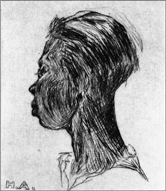

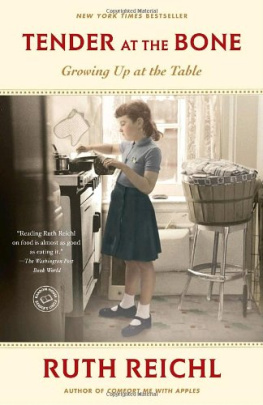



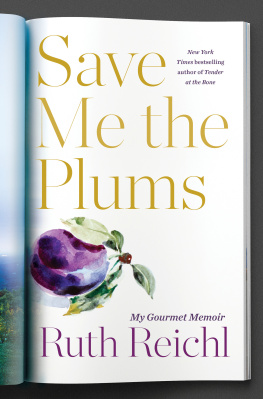
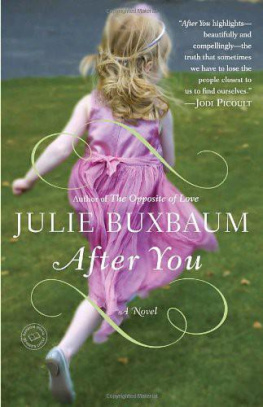

 Everybody I have ever known has helped me write this book. But, for their practical help and advice, I want to thank:
Everybody I have ever known has helped me write this book. But, for their practical help and advice, I want to thank:


